Dampers
The Dampers module provides modulating control of the outside air, mixing air, and exhaust air dampers (formal for mixing air control) as dictated by a 0-100% damper control signal from the control module. Alternatively, if an optional mixed air temperature sensor is installed, a mixed air temperature control can be selected, either with a fixed mixed air temperature setpoint or with outside air temperature compensation. Air quality (CO2) override control to maximum fresh air can be implemented optionally.
The module has internal inputs for;
the damper enable signal (DME);
the damper control signal (DMS);
mixed air temperature (MAT);
and air quality (CO2).
The internal outputs are a mixing air damper (MAD) and fan enable signal (FNE).
Delayed Fan Enable Output
To prevent freeze-up problems at start-up, this module interacts with the modules for heating coil and fans.
On receipt of the damper enable signal (DME) from the heating coil, the fan enable output (FNE) switches on, provided that the return damper is open and sent to the fan module. At start-up, the air handling unit will always start with recirculation for model with mixing dampers. In this case, the FNE output will be enabled directly after the DME input becomes true.
Ramped Operation of Dampers
The output to the dampers increases linearly to match the damper control signal (DMS). The ramping time is adjustable by the parameter DMS_RampTime and only occurs when the signal starts from the 0% position. Ramping takes place between the 0% and 100% control output signal.
Damper Control with Minimum and Maximum Damper Positioning
The module can work in several configurations. In a typical sequencing application, the module receives a damper control signal (DMS) from the control module. If the value of DMS is -1 the dampers are closed and forced recirculation is dictated from the control module. The DMS can be selected, defined by parameter DMS_RatioEnable, to be either as a position signal Y, or as a correction signal X, both with a possible range of 0-100%.
In the case of a Y signal, the input is directly transferred to the output MAD, after applying minimum and maximum limits, defined by parameters DMS_MinPosition and DMS_MaxPosition, as shown in the next figure.
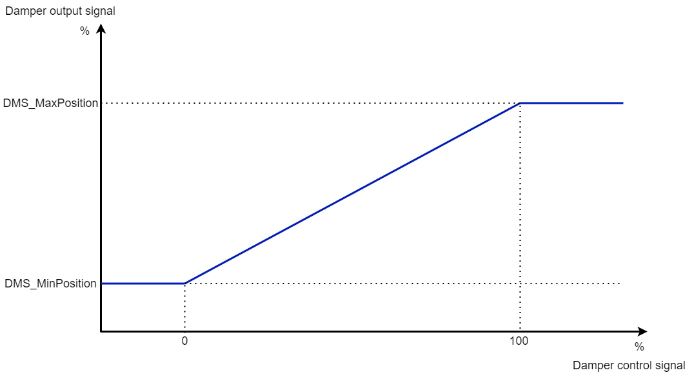
Damper output signal
In the case of the X signal, the output varies between the minimum and maximum limits, defined by parameters DMS_MinPosition and DMS_MaxPosition, over a sub-range of the X signal, determined by a ratio sequence with start and stop points, defined by parameters DMS_StartRatioControl and DMS_StopRatioControl, as shown in the next figure.
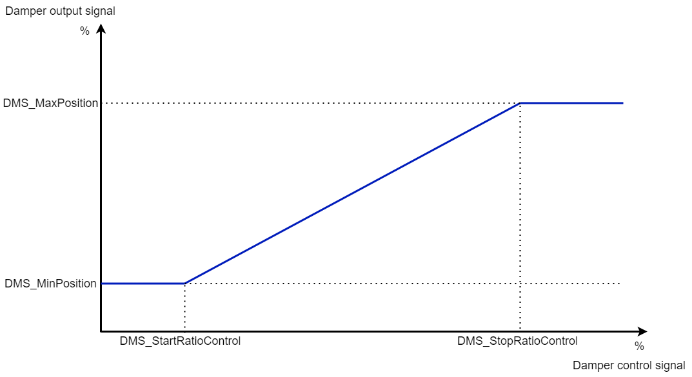
Damper output signal with correction
Mixed Air Temperature Setpoint with Outside Air Temperature Compensation
The mixed air temperature setpoint is compensated by the outside air temperature between the values defined by parameters OAT_MinSetpoint and OAT_MaxSetpoint and limited between the minimum and maximum setpoint values, defined by parameters MAT_MinSetpoint and MAT_MaxSetpoint, as shown in the next figure.
Note: If the parameter values of MAT_MinSetpoint and MAT_MaxSetpoint are equal, then compensation does not occur.
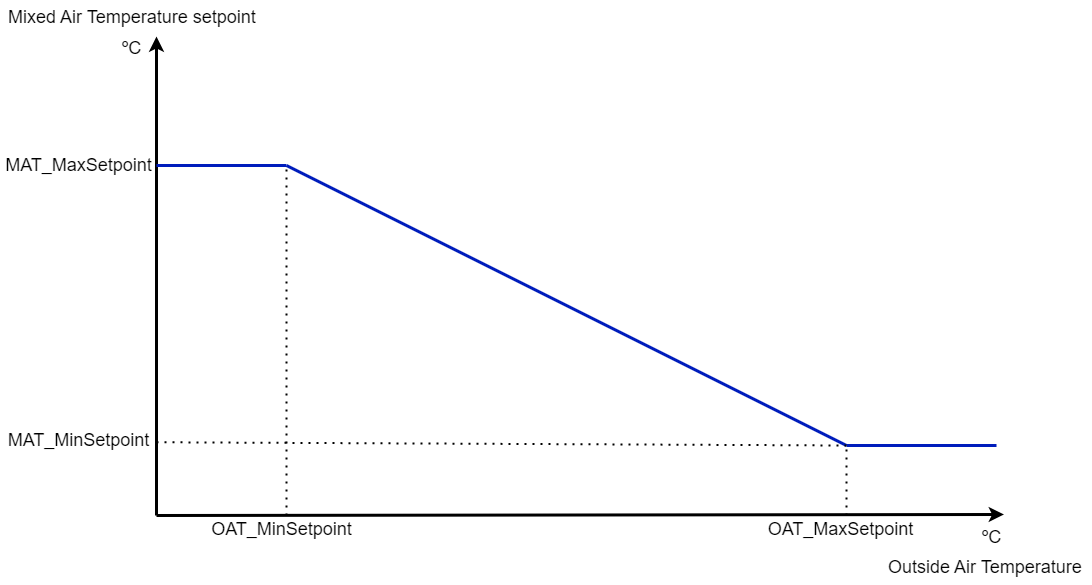
Mixed air temperature setpoint according to the outside air temperature
If no mixed air temperature sensor is available the dampers modulate only according to the damper control signal (DMS) from the control module, within minimum and maximum damper positions, defined by parameters DMS_MinPosition and DMS_MaxPosition.
Note: To render this operation inactive, set the maximum and the minimum outside air temperature (parameters OAT_MaxSetpoint and OAT_MinSetpoint) both to a value of -50°C (value lower then real outside air temperature).
In this case, the maximum fresh air damper position varies according to the outside air temperature as shown in the next figure.
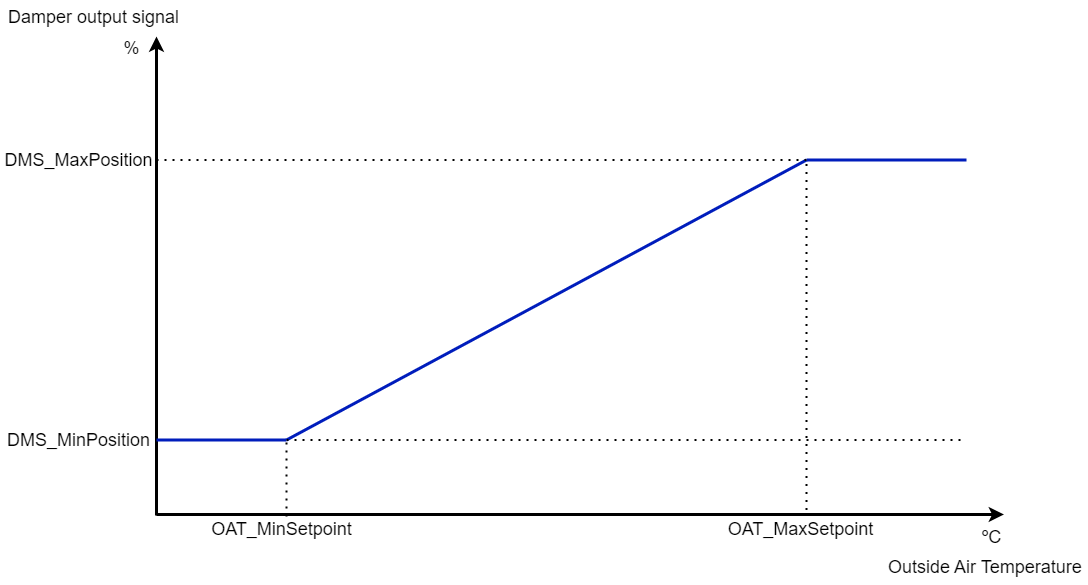
Fresh air damper output according to the outside air temperature
Air Quality/CO2 Control
The fresh air damper minimum position is increased proportionally from its fixed lowest value, defined by parameter DMS_MinPosition, by the air quality signal to the maximum, defined by parameter DMS_MaxPosition, as shown in the next figure.
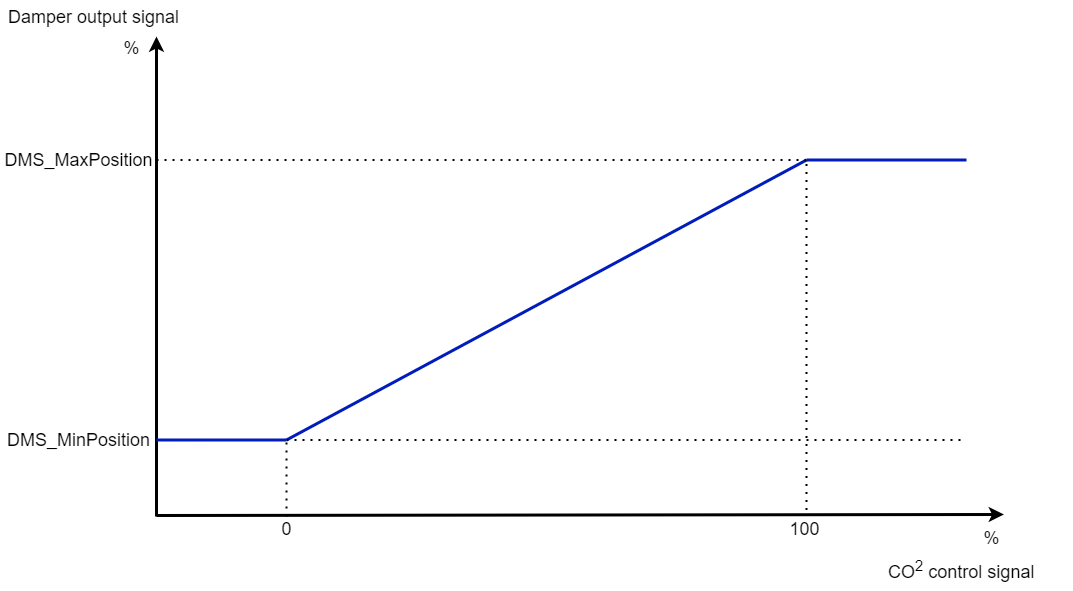
Fresh air damper output according to CO2
Mixing Temperature Control
In this case, the module acts as a mixed air temperature controller. The mixed air temperature control signal is based on the calculated mixed air temperature setpoint and the P-band, defined by parameter MAT_P_band, and minimum and maximum limited, as defined by parameters MAT_MinSetpoint and MAT_MaxSetpoint. In this case, the Y or X (0-100%) signal of the damper control signal is used with mixing ait temperature control as a minimum value of both.
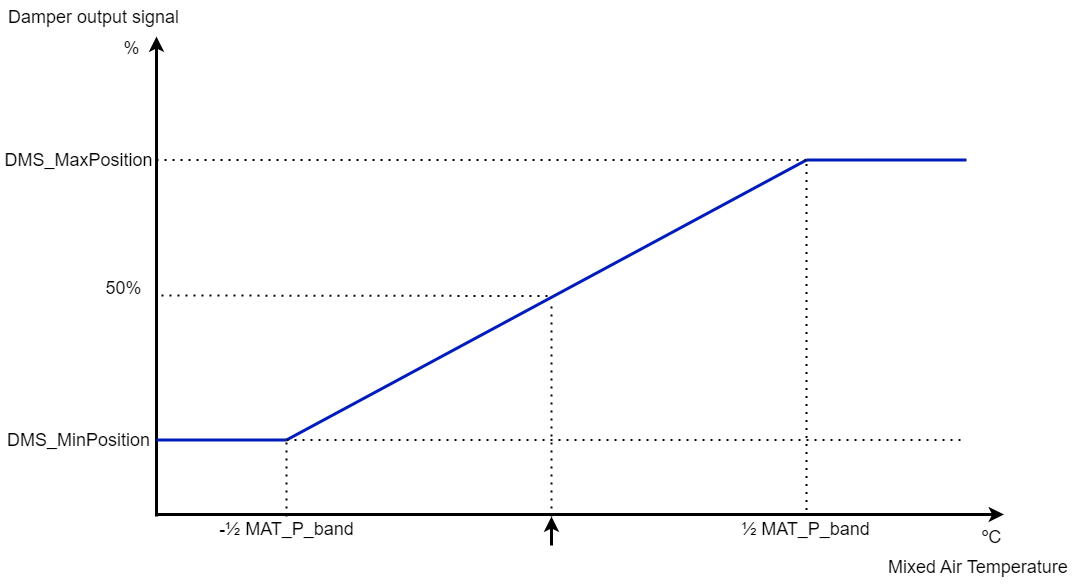
Fresh air damper output according to the mixing air temperature
